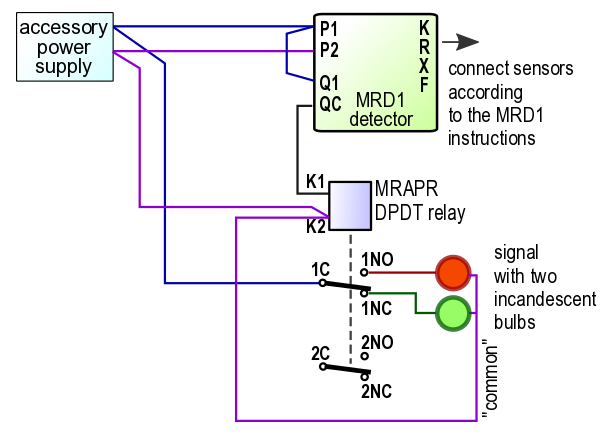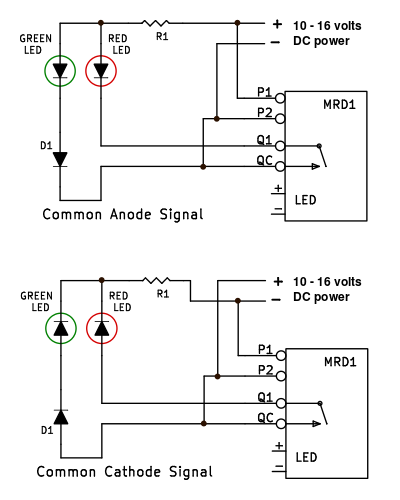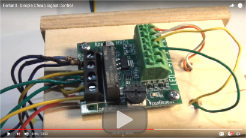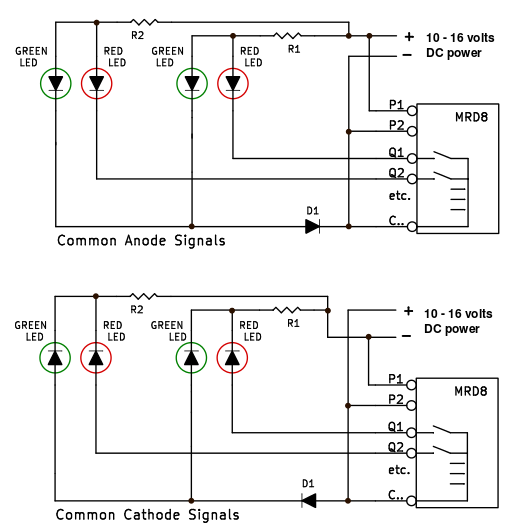 |
Control multiple two-aspect model railroad signals with the MRD8 Octal IR Train Detector
As in the example above, when the MRD8 detector senses a train, it closes its relay contact between terminals Q1 (or Q2, Q3, etc.) and C14 (or C58), and the red LED will illuminate. When no train is sensed, the relay opens and the green LED will illuminate.
Depending on the signal LEDs, you may be able to delete diode D1. Connect the green LEDs directly to the power supply. On the other hand, if the green LEDs are very efficient and noticealby glow when they should be off, add another diode (same as D1) in series with D1. Note that each signal has one resistor in the common lead. Some signal manufacturers include resistors in the individual lamp leads. To use the circuits on this page, each signal should only have a resistor in the common lead. Any resistors in the individual lamp leads should be removed.  Signals with incandescent light bulbs:
Signals with incandescent light bulbs:
To operate a two-lamp signal with incandescent lamps, an MRD1 or MRD8 detector requires a relay in addition to the detector circuit. See the diagram at the right. When a train is detected, the detector circuit energizes the relay coil. The relay contacts 'pick up' and send power to the red bulb. When the train leaves the detector, the detector turns off the relay. The relay contacts drop down, disconnecting the red bulb and sending power to the green bulb. Be sure the relay and the signal lamps can operate from the same power supply. Azatrax MRAPR relays will work on
You may send us questions or comments via the contact page.
|


